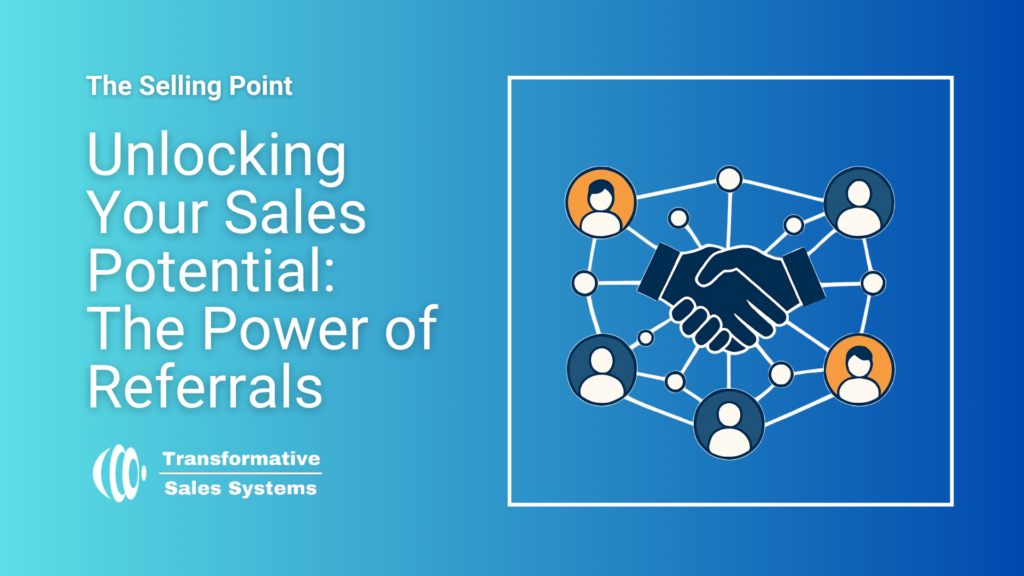Unlocking your sales potential can be tough, and constantly finding new, qualified leads can feel like a relentless grind. But what if I told you there’s a sales superpower you might be overlooking? That’s right—referrals. Hands down, referrals are among the most powerful yet underutilized tools in a salesperson’s toolkit. Why? Because a referral isn’t just another lead; it’s a warm introduction backed by trust.
Here’s your step-by-step guide on how to create, obtain, and leverage referrals effectively:
Step 1: Create the Right Conditions
Before you ask for a referral, you need to earn the right to request one. This means consistently delivering exceptional value. Your client or customer should genuinely feel you’ve made a significant difference—whether it’s solving a tricky problem, saving them money, or providing superior service.
Ask yourself, “Have I created an experience that’s referral-worthy?”
Step 2: Timing is Everything
The moment to ask for a referral is when your customer is at their happiest. This typically occurs after you’ve successfully delivered your solution or after they’ve expressed satisfaction with your service. Listen for cues like, “This has really helped us,” or “I can’t thank you enough.” That’s your window—seize it.
A simple and casual ask can work wonders:
“I’m thrilled you’re satisfied with our work! Who else do you know who could benefit from this kind of solution?”
Step 3: Make it Easy for Them
Even enthusiastic customers might stumble when asked for referrals. Remove friction by suggesting specific types of referrals you’re looking for. The more specific, the better.
Try saying:
“I specialize in working with businesses just like yours, especially in the manufacturing sector. Do you know any peers or partners who might benefit from a conversation?”
When you help your client visualize the right referral, it makes it easier for them to connect you with the perfect prospect.
Step 4: Stay Top of Mind
People are busy, and even the most willing referral partner might need gentle reminders. Stay connected by regularly checking in—not just to ask for referrals, but to genuinely engage. Send helpful articles, congratulate them on company achievements, or simply check in to say hello. People refer those they like, trust, and remember.
Step 5: Reward and Recognize
Never take referrals for granted. When someone refers you, acknowledge it immediately and genuinely. A handwritten thank-you note, a small thoughtful gift, or a public acknowledgment goes a long way. Show your appreciation clearly—it’s not only good manners but also encourages more referrals.
Step 6: Utilize Referrals Effectively
A referral is a golden opportunity—treat it accordingly. Always follow up promptly and reference the person who referred you:
“Hi, Alex! Sarah Johnson suggested I reach out. She mentioned your company is facing some challenges we’ve helped others successfully navigate. I’d love to connect and see how we can support you.”
Using the referral source’s name immediately establishes trust and opens doors much quicker.
The Final Word
Referrals are more than leads; they’re powerful endorsements. They shorten sales cycles, improve closing rates, and increase the likelihood of finding your ideal customers.
Make referrals a deliberate part of your sales strategy. You’ll not only simplify prospecting—you’ll elevate your sales game to the next level.
Ready to transform your sales approach? Connect with Transformative Sales Systems today, and let’s unlock your sales team’s full potential together!
Schedule Your Free Consultation with TSS →
For more information or to discuss your particular situation contact us at the following…
765-623-5623
To learn more about how Fractional Sales Management can help a small and midsize enterprise (SME) click the following link to learn more…
https://transformativesalessystems.com/fractional-sales-management

